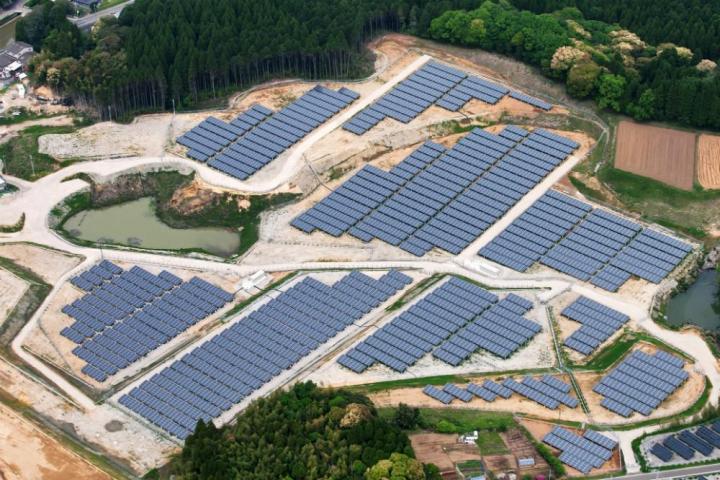
The sport is still popular among many of the nation’s salarymen, though the game clearly peaked in the bubble years of the late 1980s, when golf course development went into overdrive to keep up with demand.
Today, however, a declining population, pricey course fees, and the usual interest in “the next big thing” have seen the sport’s popularity decline, with an abundance of clubs leading to many going out of business.
So what to do with all these abandoned courses, many of which were carved into the sides of the country’s many mountains. Well, Japanese electronics maker Kyocera believes it has the answer – convert them into solar farms.
The company recently announced it’s started work on a 23-megawatt solar power plant on an abandoned golf course in Kyoto Prefecture. The plant will generate an estimated 26,000 megawatt hours per year, which should be enough electricity to power around 8,100 typical households.
The locations are perfect for such an initiative as the relatively cheap land has already been cut into mountains and is easily accessible.
Kyocera is also planning to build a solar farm on a second site near Kanoya City in the far south-west of the country. The project, to be constructed on another abandoned golf course location, is expected to generate a colossal 99,000 megawatt hours per year, making it one of the biggest solar installations in the country.
The steady move toward renewable energy follows the devastating Fukushima nuclear power plant disaster in 2011. The country’s 50 or so nuclear plants remain offline, with the government forced to resort to costly energy imports until it decides which of the plants to put back into action.
Its current stated goal is to place less reliance on nuclear energy while increasing the current output of renewable alternatives over the next 15 years.
Kyocera is one of many companies making waves in the market. Just last month we reported on another of its projects, the world’s largest floating solar panel system.


